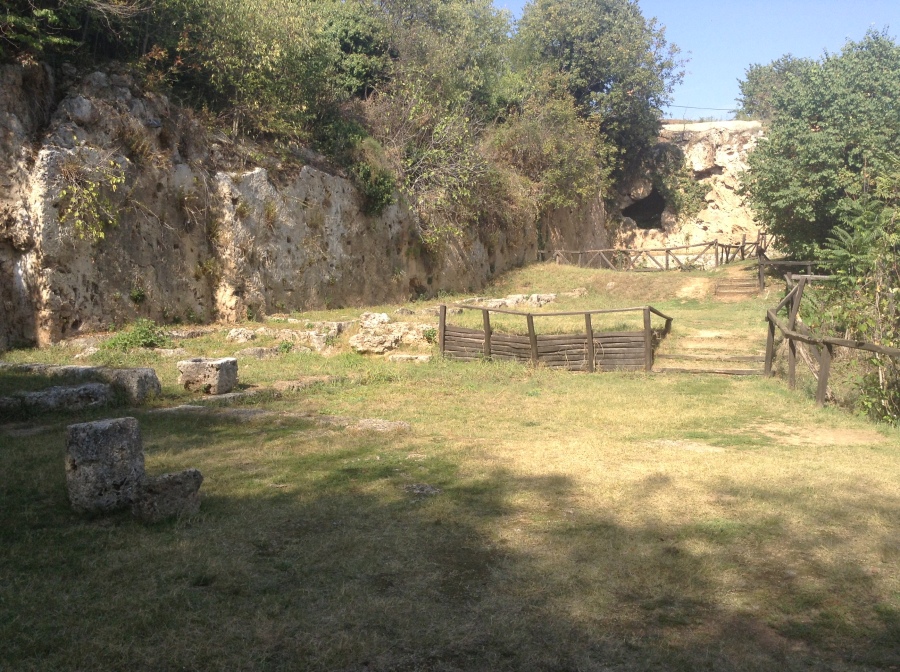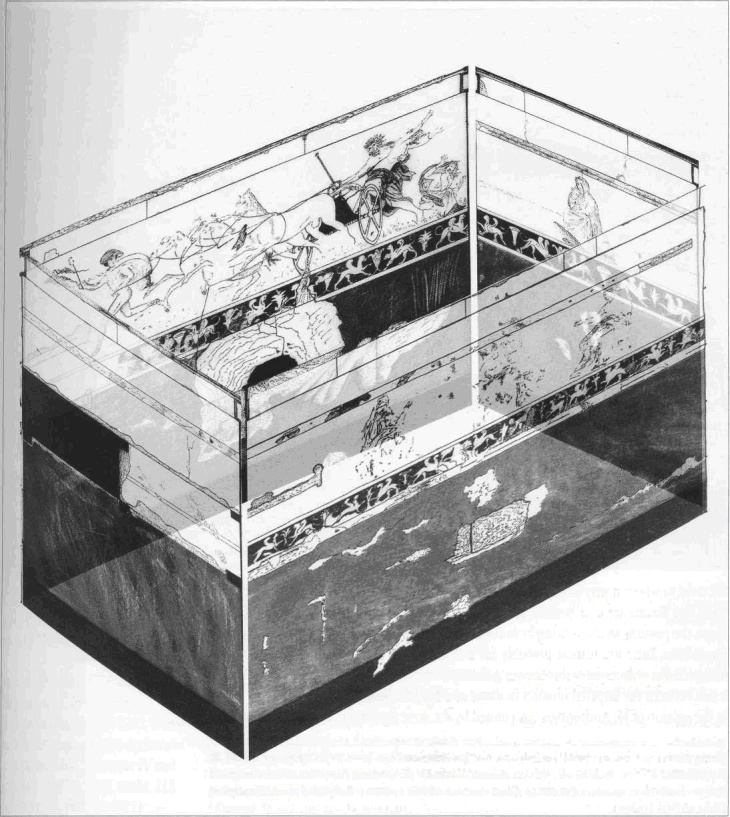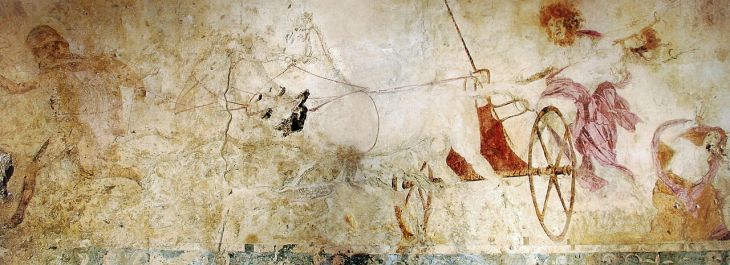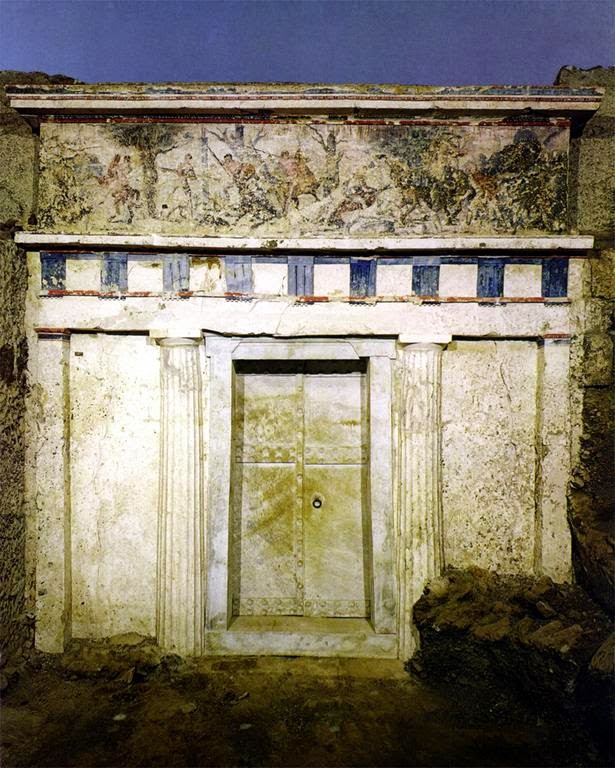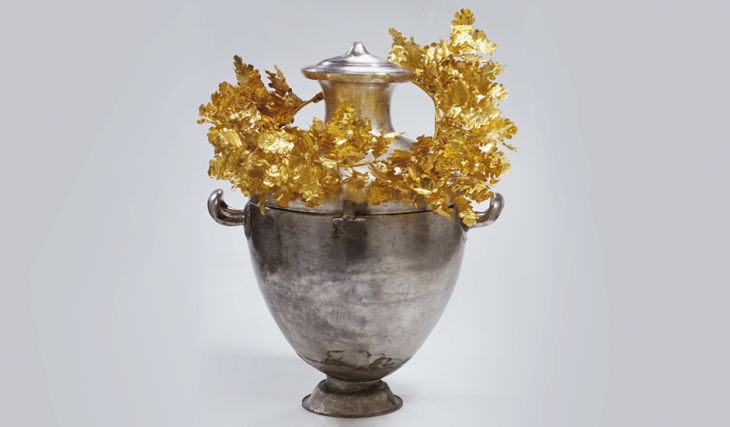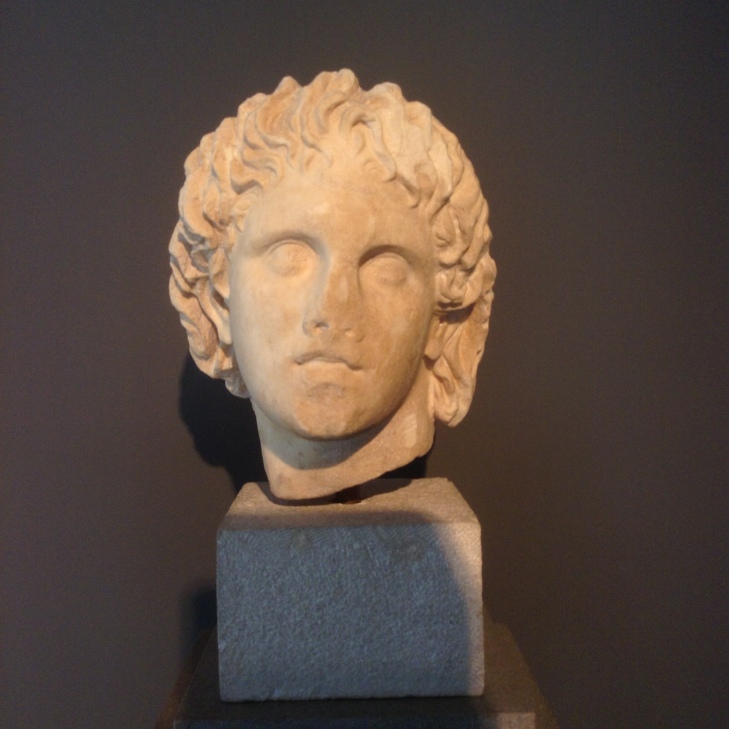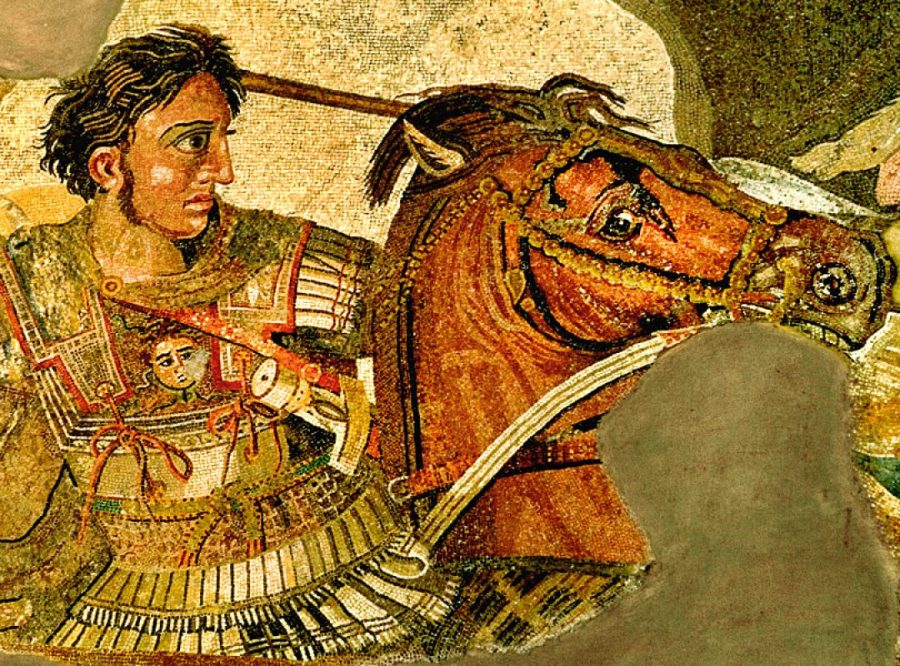On Wednesday (10-4), I paid a visit to Mieza, the ancient town where the young Alexander was tutored by Aristotle, the famous Greek philosopher.
My morning began with a phone call to the Mieza archaeological site. Having learned the night before that I could take a bus from Thessaloniki to Naoussa, the modern town closest to Mieza, I wanted to make sure that I could then take a second bus from Naoussa to Mieza. When the archaeological site confirmed that I could, I proceeded with my plan and caught a late-morning bus to Naoussa.
Yet, no sooner had I arrived in Naoussa than I made a perplexing discovery. Contrary to the archaeological site’s assurances, there was in fact no connecting bus between the two towns. (How the archaeological site got this wrong I am still not sure, but, given how things turned out, I have hardly given it a second thought.)
With the connecting bus ruled out, I figured I had two options left, neither ideal: either to walk, which I was told would be dangerous, or to take a cab, which could fast become prohibitively expensive.
It was at this point that Stavros Zachos stepped in to save the day. Having heard my story (told, as at Vergina, in Greek), Stavros, a Greek cab driver who was waiting at the Naoussa bus station when I arrived, surprised me by suggesting a third option: he would take me himself, and would do so, gratis. Tremendously grateful, and not a little stunned, I accepted Stavros’ generous offer and, just like that, found myself on the road to Mieza.
Following a brief stop at the Mieza information center, where we received a warm welcome and a variety of promotional material about the ancient town, Stavros and I began our day with a visit to two Macedonian tombs in the area, both dated to the early Hellenistic period, the period after Alexander’s death. (A total of four tombs have been discovered in the area, but two are currently closed to visitors.)
The first tomb we visited was the Tomb of Anthemion, named for the flower that features prominently in its artistic design.
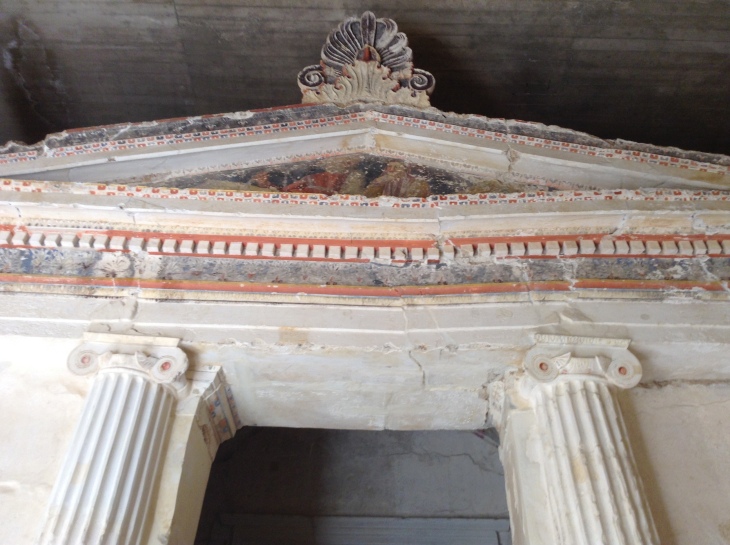


The second tomb we visited was the so-called Tomb of Judgment. Ranking among the largest Macedonian tombs ever discovered, the Tomb of Judgment takes its name from the spectacular fresco on its facade, a scene that depicts a Macedonian soldier (far left), presumably the deceased, being escorted by Hermes (center left) in his role as Psychopompos, escorter of the souls of the dead, to face judgment before Aeacus (right center) and Rhadamanthus (far right), two of the three judges of the Underworld (a sort of Pagan version of St. Peter).


What I found particularly exciting about the Tomb of Judgment was that its occupant was most likely a veteran of Alexander’s campaigns, a soldier who seems to have returned home to Macedonia after the king’s death in Babylon and lived out the rest of his days in wealth and luxury from the spoils acquired in the east. While the occupant’s identity will probably never be known for certain, I was taken with the suggestion, encountered after visiting the site, that the tomb may belong to Peucestas, a Mieza native who became Alexander’s unprecedented eighth bodyguard after saving the king’s life in a famous action during the Indian campaign.
Having finished at the second tomb, took a break to have a snack and read through some of the Mieza promotional material while waiting for Stavros to return from picking up a customer in the nearby town of Veroia.
When Stavros returned, the two of us continued on to the ancient theater of Mieza, a venue, as Stavros told me, where ancient plays are still put on from time to time.
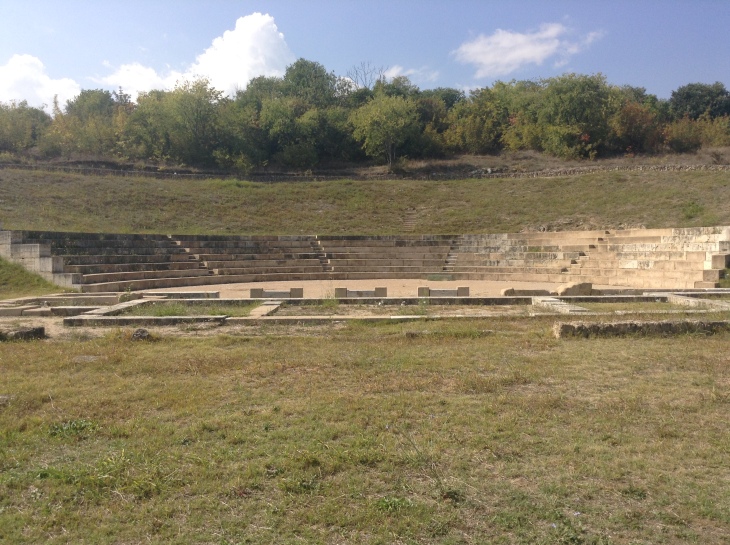
While many of its constituent parts are Roman or even modern (Greek archaeologists have recently been working to restore it), the Mieza theater dates, in its earliest form, to the late Classical/early Hellenistic period–roughly the period in which Alexander lived. Based on this dating, then, Aristotle, I believe, could just possibly have taken Alexander to this theater as part of his tutoring of the young prince. Quite a thought, that.
As the final part of our Mieza tour, Stavros and I visited the School of Aristotle, the name for the idyllic, park-like area where the philosopher tutored Alexander and a number of his peers from the Macedonian nobility (e.g., Hephaestion, Alexander’s best friend and probable lover) in a variety of subjects (e.g., philosophy, politics, literature) for some three years (343/342-340 B.C., meaning that Alexander was between 13 and 16 at the time).
Of all the Mieza sites I visited, I found the School of Aristotle to be the most evocative.
On this grassy terrace, I could imagine Aristotle lecturing while Alexander and his friends listened from the stone benches carved along its sides.

In this cave (and others like it), I could imagine Alexander and his friends exploring in their free time, or even having class on rainy days.

And through this forest, I could imagine Alexander and his friends running and splashing, taking a break from their studies to just be kids.
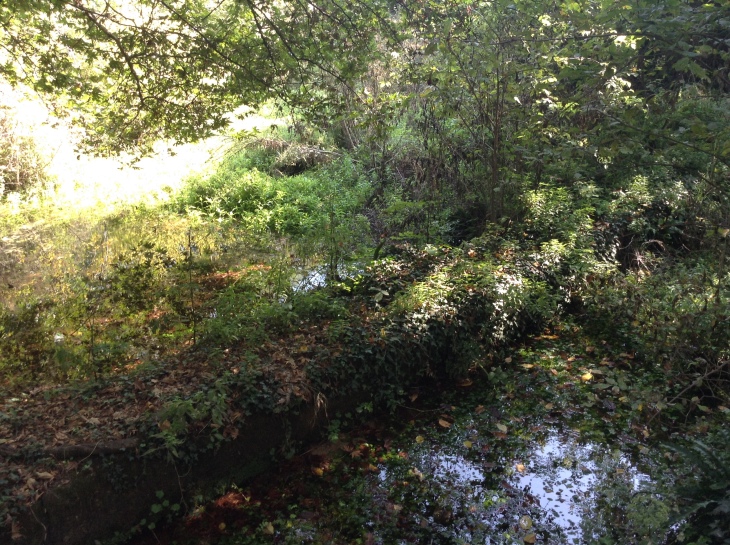
At that point, having completed our tour of ancient Mieza, Stavros and I made our way back to Naoussa, where he had work and family to attend to and I a bus to catch. Before departing, however, I told Stavros that I wanted to give him a gift (monetary, in this case, as that was all I really had to give at the time) to thank him for everything he had done for me. True to form, Stavros refused at first, saying a gift was totally unnecessary; however, when I insisted, he graciously accepted. This made me so glad. I couldn’t imagine saying good-bye to Stavros without repaying, in some small measure, his quintessentially Greek philoxenia, that quality of kindness and generosity to strangers that had made this day–and our friendship–possible.
Ultimately, in a way I think Alexander himself would have understood, I found myself thinking afterward that, for as much as I had enjoyed visiting Mieza, I had enjoyed meeting Stavros even more.

